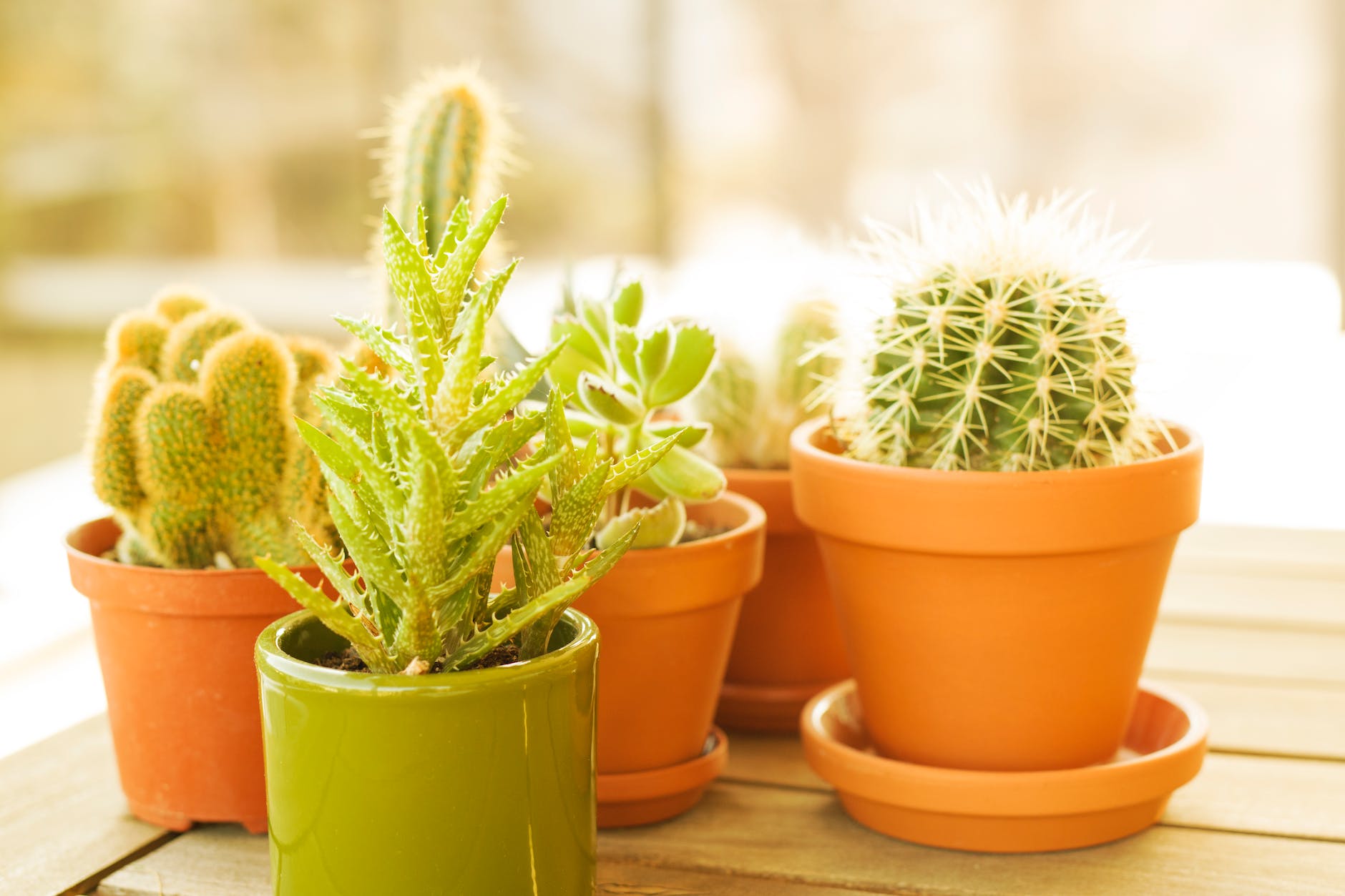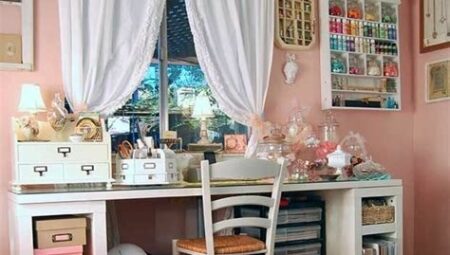Are you passionate about living a green and eco-friendly lifestyle? Do you want to create a living space that not only looks beautiful but also prioritizes sustainability? Look no further! In this article, we will share some valuable decor tips that will help you create an environmentally friendly home while reducing your carbon footprint.
When it comes to eco-friendly decor, one of the key factors to consider is the materials used. Opt for sustainable options such as reclaimed wood, bamboo, and organic fabrics. These materials are not only beautiful but also have a lower impact on the environment compared to their conventional counterparts.
In addition to choosing sustainable materials, it is important to incorporate energy-efficient lighting into your home design. LED bulbs and solar-powered fixtures are excellent choices that not only save energy but also last longer. By making this simple switch, you can significantly reduce your energy consumption and contribute to a greener planet.
Another aspect of eco-friendly decor is the paint you use on your walls. Traditional paints often contain harmful chemicals that can negatively impact indoor air quality. Instead, opt for natural and non-toxic paints, which are free from these harmful substances. Not only will they help improve the air you breathe, but they also come in a wide range of beautiful colors.
Upcycling and repurposing old items is another fantastic way to add unique and eco-friendly touches to your home decor. Get creative and give a new life to old furniture, accessories, or even clothing. By doing so, you not only reduce waste but also add a personal touch to your living space.
Lastly, don’t forget to bring nature indoors! Indoor plants not only add beauty to your home but also help purify the air. Consider incorporating plants that are known for their air-purifying qualities, such as peace lilies, snake plants, and spider plants. These green companions will not only brighten up your space but also contribute to a healthier environment.
By following these eco-friendly decor tips, you can create a living space that is not only aesthetically pleasing but also sustainable. So, why wait? Start making small changes today and make a big difference in creating a greener and healthier home.
Choosing Sustainable Materials
Choosing sustainable materials for your home decor is not only a responsible choice but also a stylish one. By opting for eco-friendly materials, you can create a living space that is both aesthetically pleasing and environmentally conscious.
One of the most popular choices for sustainable materials is reclaimed wood. This type of wood is salvaged from old buildings, barns, or other structures, giving it a unique character and history. By using reclaimed wood, you are not only reducing the demand for new timber but also preventing valuable resources from going to waste.
Bamboo is another excellent option for eco-friendly home decor. It is a fast-growing grass that can be harvested without causing any harm to the environment. Bamboo is known for its strength and durability, making it suitable for various applications such as flooring, furniture, and even textiles.
When it comes to fabrics, organic materials are the way to go. Organic fabrics are made from natural fibers that are grown without the use of pesticides or synthetic fertilizers. They are also produced using environmentally friendly processes that minimize water and energy consumption. By choosing organic fabrics for your upholstery, curtains, and bedding, you can create a healthier living environment while supporting sustainable farming practices.
Incorporating these sustainable materials into your home decor not only reduces your carbon footprint but also adds a unique and natural touch to your living space. So, why not make a conscious choice and choose materials that are both eco-friendly and stylish?
Energy-Efficient Lighting
Energy-efficient lighting is a crucial aspect of creating an eco-friendly home design. By incorporating sustainable lighting options, you can significantly reduce your energy consumption and carbon footprint. One of the most popular choices for energy-efficient lighting is LED bulbs. These bulbs use up to 80% less energy than traditional incandescent bulbs and have a much longer lifespan, making them a cost-effective and environmentally friendly choice.
In addition to LED bulbs, you can also consider incorporating solar-powered fixtures into your home design. Solar-powered lights use renewable energy from the sun, eliminating the need for electricity and reducing your reliance on fossil fuels. These fixtures are perfect for outdoor lighting, such as garden lights or pathway lights, and can add a beautiful ambiance to your eco-friendly living space.
When choosing energy-efficient lighting options, it’s essential to consider both functionality and aesthetics. Look for fixtures that not only provide ample light but also complement your overall home decor. You can create a warm and inviting atmosphere by selecting lighting fixtures with soft, warm tones. Additionally, consider installing dimmer switches to adjust the brightness level according to your needs, further optimizing energy usage.
To make the most of your energy-efficient lighting, it’s also important to take advantage of natural light. Maximize the use of windows and skylights to bring in natural sunlight during the day, reducing the need for artificial lighting. This not only saves energy but also creates a bright and airy atmosphere in your home.
By incorporating energy-efficient lighting options like LED bulbs and solar-powered fixtures, you can make a significant difference in reducing your environmental impact. Not only will you save money on energy bills, but you will also contribute to a more sustainable and eco-friendly living space.
Natural and Non-Toxic Paints
When it comes to creating an eco-friendly living space, one important aspect to consider is the type of paint you use on your walls. Traditional paints often contain harmful chemicals, known as volatile organic compounds (VOCs), which can release toxins into the air and contribute to poor indoor air quality. However, by opting for natural and non-toxic paints, you can not only enhance the aesthetics of your home but also prioritize the health and well-being of your family.
So, what are the benefits of using natural and non-toxic paints? Firstly, these paints are free from VOCs, making them a safer choice for both your health and the environment. VOCs can cause various health issues, such as respiratory problems, headaches, and allergic reactions. By choosing natural paints, you can eliminate these risks and create a healthier indoor environment.
Moreover, natural and non-toxic paints are often made from sustainable and renewable resources, such as plant-based ingredients and minerals. These paints are biodegradable and have a lower impact on the environment compared to conventional paints. By opting for eco-friendly paints, you are reducing your carbon footprint and contributing to the overall sustainability of your home.
In addition, natural paints are available in a wide range of colors and finishes, allowing you to express your personal style while still being environmentally conscious. You can create a beautiful and vibrant living space without compromising on your commitment to green living.
In conclusion, choosing natural and non-toxic paints for your home decor is a smart and responsible choice. Not only do these paints contribute to better indoor air quality, but they also minimize the negative impact on the environment. So, let’s embrace eco-friendly painting options and enjoy a healthier and more sustainable living environment.
Upcycling and Repurposing
Upcycling and repurposing old items is not only a great way to reduce waste but also adds unique and eco-friendly touches to your home decor. Instead of throwing away old furniture or accessories, consider giving them a new life with a little creativity and imagination.
One creative way to upcycle old items is by transforming them into something completely different. For example, an old ladder can be repurposed into a unique bookshelf or a plant stand. A vintage suitcase can be turned into a stylish storage ottoman. The possibilities are endless, and by upcycling, you are not only reducing waste but also adding character and charm to your living space.
Another way to upcycle is by giving old furniture a fresh coat of paint or a new upholstery. A worn-out chair can be transformed into a statement piece by painting it in a bold color or reupholstering it with a vibrant fabric. This not only saves money but also prevents the need to buy new furniture, which contributes to the carbon footprint.
When it comes to repurposing, think outside the box. Old glass jars can be used as candle holders or storage containers. Wine corks can be turned into coasters or used to create unique wall art. By repurposing these items, you are giving them a new purpose and preventing them from ending up in a landfill.
Incorporating upcycled and repurposed items into your home decor not only adds a personal touch but also promotes sustainability. It allows you to express your creativity while reducing waste and contributing to a more eco-friendly lifestyle. So, instead of buying new, consider upcycling and repurposing old items to create a one-of-a-kind and environmentally friendly living space.
Indoor Plants for Air Purification
Indoor plants not only enhance the aesthetic appeal of your living space but also play a crucial role in purifying the air you breathe. By incorporating the right indoor plants into your home decor, you can create a healthier environment for yourself and your loved ones.
When it comes to choosing indoor plants for air purification, there are several options to consider. One popular choice is the Snake Plant, also known as Mother-in-Law’s Tongue. This hardy plant is known for its ability to remove toxins like formaldehyde and benzene from the air. It is also a low-maintenance plant, making it perfect for those who may not have a green thumb.
Another excellent option is the Peace Lily, which not only adds beauty to your space with its elegant white flowers but also helps to remove harmful pollutants such as ammonia, benzene, and formaldehyde. This plant thrives in low light conditions, making it suitable for areas with less natural sunlight.
The Spider Plant is another indoor plant that is highly effective at purifying the air. It is known for its ability to remove carbon monoxide, formaldehyde, and xylene from the air. This plant is also easy to care for and can thrive in a variety of lighting conditions.
If you are looking for a plant that is both visually appealing and beneficial for air purification, consider the Boston Fern. This lush green plant not only adds a touch of elegance to your space but also helps to remove toxins like formaldehyde and xylene from the air. It requires a bit more care compared to other plants, including regular watering and misting.
By incorporating these indoor plants into your home decor, you can create a healthier and more enjoyable living space. Not only will they add beauty and freshness to your surroundings, but they will also help to purify the air, promoting a healthier environment for you and your loved ones.
Low-Water and Drought-Tolerant Plants
When it comes to creating an eco-friendly living space, one important aspect to consider is the choice of low-water and drought-tolerant plants. These plants are specifically designed to thrive in environments with limited water availability, making them perfect for eco-conscious individuals and regions with water scarcity.
Low-water and drought-tolerant plants have adapted to survive in arid conditions by storing water in their leaves, stems, or roots. This means they require less frequent watering and can withstand dry spells without suffering damage. By incorporating these plants into your home decor, you not only contribute to water conservation but also create a sustainable and beautiful environment.
There are several options to explore when it comes to low-water and drought-tolerant plants. Succulents, such as aloe vera and jade plants, are excellent choices as they store water in their fleshy leaves. These plants come in a variety of shapes and sizes, adding a unique touch to your decor while requiring minimal watering.
Another option is to consider native plants that are naturally adapted to the local climate and require less water to thrive. Research the native plants in your region and choose those that are known for their drought tolerance. These plants have evolved to survive with limited rainfall and can withstand dry conditions without compromising their beauty.
When arranging your low-water and drought-tolerant plants, consider grouping them together based on their water needs. This way, you can create a visually appealing display while ensuring efficient watering practices. Additionally, incorporating mulch around the plants can help retain moisture in the soil, further reducing the need for frequent watering.
By exploring low-water and drought-tolerant plant options, you can create a sustainable and eco-friendly living space that not only conserves water but also adds beauty to your home. These plants are ideal for individuals who are conscious of their environmental impact and want to contribute to water conservation efforts. Embrace the beauty of nature while reducing your carbon footprint with these resilient and water-wise plants.
Composting and Recycling
Composting and recycling are essential practices that can be incorporated into your home decor, helping to reduce waste and create a more sustainable lifestyle. By implementing these eco-friendly habits, you can contribute to a healthier environment and make a positive impact on the planet.
When it comes to composting, you can start by setting up a compost bin in your backyard or even using a small indoor composting system. This allows you to turn your food scraps, yard waste, and other organic materials into nutrient-rich compost that can be used to fertilize your plants and garden. Not only does composting help divert waste from landfills, but it also reduces the need for chemical fertilizers, promoting natural and sustainable gardening practices.
In addition to composting, recycling is another crucial aspect of sustainable living. Make sure to separate your recyclable materials, such as paper, plastic, glass, and metal, from your regular trash. Set up designated recycling bins in your home to make it easier to sort and dispose of recyclables properly. Remember to check the recycling guidelines in your area to ensure you are following the correct procedures.
Furthermore, you can also consider upcycling and repurposing items as a creative way to reduce waste. Instead of throwing away old furniture or household items, think about how you can give them a new life. For example, you can transform an old ladder into a bookshelf or use mason jars as stylish storage containers. By upcycling and repurposing, you not only reduce waste but also add unique and eco-friendly touches to your home decor.
By incorporating composting and recycling practices into your home decor, you can significantly reduce your carbon footprint and contribute to a more sustainable lifestyle. These simple yet effective actions demonstrate your commitment to the environment and inspire others to follow suit. Together, we can make a difference and create a greener future for generations to come.
Frequently Asked Questions
- What are some eco-friendly materials for home decor?
There are several sustainable materials you can choose for your home decor, such as reclaimed wood, bamboo, and organic fabrics. These materials are renewable, biodegradable, and have a lower environmental impact compared to traditional materials.
- How can I incorporate energy-efficient lighting into my eco-friendly home design?
You can switch to energy-efficient lighting options like LED bulbs and solar-powered fixtures. LED bulbs use less energy and have a longer lifespan, while solar-powered fixtures harness the power of the sun to provide lighting without relying on electricity.
- What are the benefits of using natural and non-toxic paints?
Natural and non-toxic paints are free from harmful chemicals, making them safer for both your health and the environment. They also contribute to better indoor air quality by reducing the release of volatile organic compounds (VOCs).
- How can I upcycle and repurpose old items for eco-friendly home decor?
There are numerous creative ways to upcycle and repurpose old items. You can turn an old ladder into a bookshelf, transform wine bottles into vases, or repurpose wooden pallets into furniture. By giving new life to these items, you reduce waste and add unique, eco-friendly touches to your home decor.
- Which indoor plants are best for air purification?
There are several indoor plants that not only add beauty to your living space but also help purify the air. Some examples include the snake plant, spider plant, and peace lily. These plants naturally remove toxins from the air, promoting a healthier environment.
- Are there plant options that require less water for eco-conscious individuals?
Absolutely! There are various low-water and drought-tolerant plant options available. These plants have adapted to survive in arid conditions and require less water. They are ideal for eco-conscious individuals and regions with water scarcity.
- How can I incorporate composting and recycling practices into my home decor?
You can set up a composting system in your kitchen or garden to turn organic waste into nutrient-rich compost for your plants. Additionally, make sure to have recycling bins conveniently placed throughout your home to separate recyclable materials from general waste. These practices help reduce waste and contribute to a more sustainable lifestyle.



